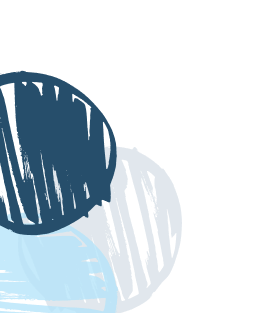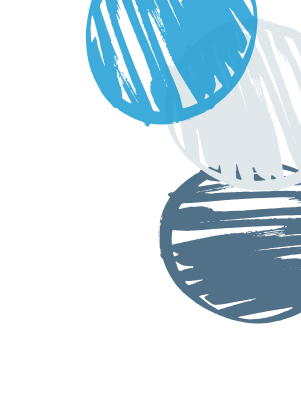

Comparing Organisms

Click to Start Lesson
Comparing Organisms
45min
Students will be able to identify similarities and differences between animals. Students will be able to use events and messages to trigger a character’s movement.
Prerequisites
_Computer Science_: Students should have experience with events and messages.
_Science_: Students should be familiar with identifying the physical characteristics of animals.
Lesson Preparation
* This lesson uses messages to create buttons. Based on your students’ familiarity with messages, decide if you need to plan for additional time to review this concept.
* Share the interactive activity with students if they will complete it individually.
Lesson Plan
Lesson Slides
Lesson Standards
| Standard | Description |
|---|---|
| CA CS K-5: K-2.AP.13 | Decompose the steps needed to solve a problem into a sequence of instructions. |
| FL CS K-2: SC.K2.CS-CS.3.1 | Create a digital artifact (independently and collaboratively) that clearly expresses thoughts and ideas. |
| FL CS K-2: SC.K2.CS-CS.3.2 | Create, review, and revise artifacts that include text, images, and audio using digital tools. |
| GA Science K-5: SKL2 | Obtain, evaluate, and communicate information to compare the similarities and differences in groups of organisms. |
| GA Science K-5: SKL2.a | Construct an argument supported by evidence for how animals can be grouped according to their features. |
| IN Science K-5: K.LS.2 | Describe and compare the physical features of common living plants and animals. |
| KY CS K-5: E-AP-04 | Decompose precise steps needed to solve a problem. |
| KY CS K-5: E-AP-05 | Use a process when creating programs or computational artifacts. |
| KY CS K-5: E-AP-03 | Routinely create programs using a variety of tools to express ideas, address a problem or create an artifact, individually and collaboratively. |
| NE K-5 Technology: NE.K5.52 | Create algorithms, or series of ordered steps, to solve problems. |
| NE K-5 Technology: NE.K5.53 | Decompose a problem into smaller more manageable parts. |
| NE K-5 Technology: NE.K5.59 | Write programs using visual (block-based) programming languages (scratch). |
| NE K-5 Technology: NE.K5.60 | Create and modify animations, and present work to others. |
| NJ CS K-2: 8.1.2.AP.3 | Create programs with sequences and simple loops to accomplish tasks. |
| NJ CS K-2: 8.1.2.AP.4 | Break down a task into a sequence of steps. |
| NV CS K-5: K.AP.A.1 | Model daily processes by creating and following sets of step-by-step instructions (algorithms) to complete tasks. |
| NY CS K-6: K-1.CT.1 | Identify and describe one or more patterns (found in nature or designed), and examine the patterns to find similarities and make predictions. |
| NY CS K-6: K-1.CT.4 | Identify a problem or task and discuss ways to break it into multiple smaller steps. |
| NY CS K-6: K-1.CT.9 | Identify and fix (debug) errors within a simple algorithm. |
| NY CS K-6: K-1.DL.4 | Use a least one digital tool to create a digital artifact. |
| NY CS K-6: 2-3.CT.9 | Identify and debug errors within an algorithm or program that includes sequencing or repetition. |
| OK CS K-2: K.AP.C.01 | With guidance, independently or collaboratively create programs to accomplish tasks using a programming language, robot device, or unplugged activity that includes sequencing (i.e., emphasizing the beginning, middle, and end). |
| OK CS K-2: K.AP.PD.01 | With guidance, create a grade-level appropriate artifact to illustrate thoughts, ideas, or stories in a sequential (step-by-step) manner (e.g., story map, storyboard, and sequential graphic organizer). |
| OK CS K-2: K.AP.PD.03 | With guidance, independently or collaboratively debug algorithms using a programming language and/or unplugged activity that includes sequencing. |
| OK CS K-2: 1.AP.C.01 | With guidance, independently or collaboratively create programs to accomplish tasks using a programming language, robot device, or unplugged activity that includes sequencing and repetition. |
| OK CS K-2: 1.AP.PD.01 | Independently or with guidance, create a grade-level appropriate artifact to illustrate thoughts, ideas, or stories in a sequential (step-by-step) manner (e.g., story map, storyboard, and sequential graphic organizer). |
| OK CS K-2: 1.AP.PD.03 | With guidance, independently or collaboratively debug programs using a programming language and/or unplugged activity that includes sequencing and repetition. |
| OK CS K-2: 2.AP.C.01 | With guidance, independently and collaboratively create programs to accomplish tasks using a programming language, robot device, or unplugged activity that includes sequencing and repetition. |
| OK CS K-2: 2.AP.PD.01 | Independently or with guidance, create a grade-level appropriate artifact to illustrate thoughts, ideas, or stories in a sequential (step-by-step) manner (e.g., story map, storyboard, and sequential graphic organizer). |
| OK CS K-2: 2.AP.PD.03 | With guidance, independently and collaboratively debug programs using a programming language and/or unplugged activity that includes sequencing and repetition. |
| TN CS K-5: K.CCP.4 | Decompose an example problem into smaller sub-problems with teacher guidance or independently. |
| TN CS K-5: 1.CCP.3 | Construct an algorithm by arranging sequential events step-by-step in a logical order. |
| TN CS K-5: 1.CCP.6 | Decompose larger problems or tasks into smaller sub-problems independently. |
| TN CS K-5: 2.CCP.6 | Define a problem or task, decompose it into smaller sub-problems. |
| TN CS K-5 2022: K.AT.1 | Construct sequential events step-by-step in a logical order. |
| TN CS K-5 2022: 1.AT.2 | Classify and sort information into logical order with and/or without a computer. |
| UT Science K-6: K.2.1 | Obtain, evaluate, and communicate information to describe patterns of what living things (plants and animals, including humans) need to survive. Emphasize the similarities and differences between the survival needs of all living things. |
| WI CS K-2: DA4.a.2.e | Create a model of an object or process in order to identify patterns and essential elements (e.g., water cycle, butterfly life cycle, seasonal weather patterns). |
| WY CS K-2: 2.AP.C.01 | With guidance, independently and collaboratively create programs to accomplish tasks using a programming language, robot device, or unplugged activity that includes sequencing, conditionals, and repetition. |
| WY CS K-2: 2.AP.M.01 | Using grade appropriate content and complexity, decompose (breakdown) the steps needed to solve a problem into a precise sequence of instructions (e.g., develop a set of instructions on how to play your favorite game). |
| WY CS K-2: 2.AP.PD.03 | Independently and collaboratively debug (identify and fix errors) programs using a programming language. |